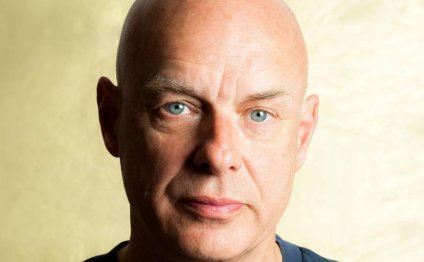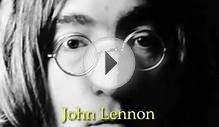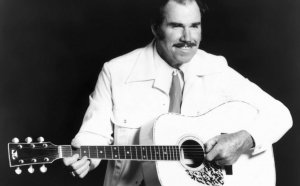
Classical music artists list
![]() Born in Germany, but traveled Europe and settled in England, as the king’s court composer. He wrote 315 hours of music, second only to Haydn for prolificness. His mastery of all the complexities of the Baroque style is evident in all his works. He invented the modern oratorio, when he wanted to make money during the holy seasons of the year. During those seasons, operas were expressly forbidden to be performed, as they were secular. Handel requested from the king that he compose a musical setting of some story in the Bible. The king allowed this, and Handel wrote in 1732, “Esther, ” which was performed by an orchestra and a choir, with soloists singing the parts of the characters, but without acting or costumes.
Born in Germany, but traveled Europe and settled in England, as the king’s court composer. He wrote 315 hours of music, second only to Haydn for prolificness. His mastery of all the complexities of the Baroque style is evident in all his works. He invented the modern oratorio, when he wanted to make money during the holy seasons of the year. During those seasons, operas were expressly forbidden to be performed, as they were secular. Handel requested from the king that he compose a musical setting of some story in the Bible. The king allowed this, and Handel wrote in 1732, “Esther, ” which was performed by an orchestra and a choir, with soloists singing the parts of the characters, but without acting or costumes.
Handel is known today primarily for “The Messiah, ” (video above) the greatest oratorio ever composed, in which some of the most famous music in history lies, especially the “Hallelujah Chorus, ” which ends the Easter section.
Handel also wrote hundreds of concerti grossi, which were the forerunners of the Classical and Romantic concerto.
Handel’s greatest works are the “Messiah, ” “Water Music, ” and “Music for the Royal Fireworks.”
One of the few composers who was equally virtuosic at performance (piano), and conducting an orchestra. He legendary for his second two, of four, piano concerti, the third being probably the most difficult and pianistic concerto every written, containing one of the finest piano cadenzas. He is known for writing large chords of up to 5 notes per hand, which he could perform easily with his gigantic hands.
His shorter works include large-scale piano sonatas, epic enough to be considered concerti without orchestras, and preludes, of which his most famous is the “Prelude in c-sharp minor, ” a work which became so famous in his lifetime that he grew sick of playing it.
His greatest works are “the 2nd Piano Concerto, ” “the 3rd Piano Concerto, ” the “Rhapsody on a Theme of Paganini, ” (video above) and his sonatas.
12Peter Ilyich Tchaikovsky
One of the finest orchestrators, and one of the supreme melody writers in all of music. Not surprisingly, his favorite composer was Mozart, in honor of whom he wrote “Mozartiana, ” an elaboration of several of Mozart’s melodies. Tchaikovsky is the all-time master of the ballet, and all of his are world-famous: the “Nutcracker, ” “Swan Lake, ” “Sleeping Beauty.” He wrote two operatic masterpieces, “Eugene Onegin, ” and “The Queen of Spades.”
His ballets are well known for their melodic magnificence, but he also wrote 6 symphonies, the last three of which are universally accepted as legendary for the resplendent orchestration and development of their lyrical melodies. The fourth is also noted for the bombastic, violent, celebratory spirit of its final movement. The fifth is famous as an elaboration of this same spirit, culminating in a complex final movement of victorious, fanfare quality. The sixth is considered by many to be more affecting and better than the fifth or fourth. It is nicknamed “Pathetique, ” for its somber, sad emotion.
Tchaikovsky was also a master of the concerto, and wrote three piano concerti, the first of which is one of the most famous in history, and one of the most superb for its hyper-Romantic, lyrical qualities, and the famous octave passages. Its first movement famously ends with a 1-4-1 cadence, unique to all music up to that time. His violin concerto is world renowned for its technical demands and lush, lyrical beauty. Joshua Bell has compared the final movement to running a three minute mile.
Tchaikovsky’s greatest works are his “1st Piano Concerto, ” his “Violin Concerto, ” his last three symphonies, his ballets, “Eugene Onegin, ” the famous “Overture to 1812, ” (finale video above – listen for the canons!) and “Capricio Italienne.”
The symphonist of death, you could call him. Mahler’s repertoire is quite small compared to that of any other on this list. He only wrote 10 symphonies, the last of which he had not orchestrated before he died. He wrote a symphonic song cycle, “Das Lied von der Erde, ” which has been called his finest symphony, though he did not intend it to be considered one, and he wrote dozens of other songs, many preoccupied with death.
His first symphony is largely imitative of a more Classical sound, but his second begins the career of the Mahler everyone knows when they hear his music. It is nicknamed the Resurrection, and it’s final movement’s premiere was said to have made women pass out, and grown men weep. His third is the longest symphony ever written, at an average performance length of 1 hour and 30 minutes. It also ends with a majestic bravura climax.
His sixth is called the tragic, and returns to his roots of a preoccupation with death. The seventh is notable for its last movement, a fanfare extolling the happiness of life on Earth.
His eighth is nicknamed “Symphony of a Thousand, ” though he hated this epithet, because of the monstrous orchestra it calls for. It is the only symphony scored entirely for orchestra and chorus, the chorus present in all but 12 minutes or so of its 1 hour and 20 minute duration.
It ends with the most glorious, heavenly, galactic climax in the history of music, as the characters of Goethe’s Faust sing the final scene, and are lifted to Heaven.
Das Lied von der Erde is a song cycle of 6 Chinese Poems praising Earth, which Mahler translated into German. They are the maturation of his compositional style.
Mahler’s greatest works are his 2nd, 3rd, 5th, 6th, 7th, 8th symphonies and “Das Lied von der Erde.” (video above).
YOU MIGHT ALSO LIKE



Share this Post
Related posts
Old Country music artists list
In this directory you will find the homepage of almost every relevant male artist in the world, dead or alive , famous or…
Read MoreCountry music artists list
List Criteria: Only female singers who sing in the country music genre Some of the biggest selling and most popular singers…
Read More










